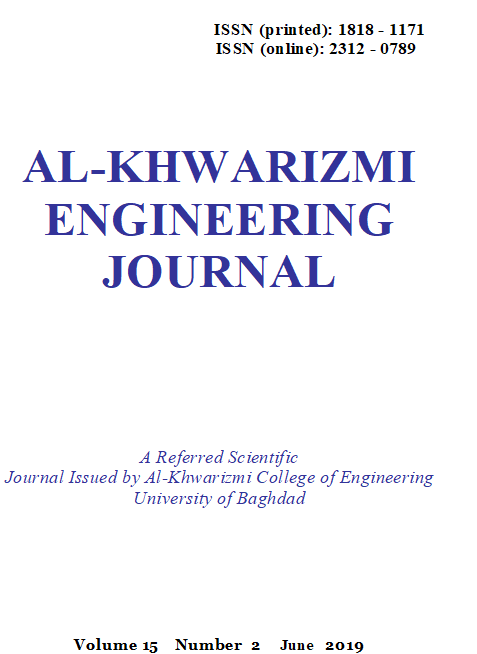Effect of Quenching Media Variations on the Mechanical Behavior of Martensitic Stainless Steel
DOI:
https://doi.org/10.22153/kej.2019.11.002Abstract
The purpose of this study is designate quenching and tempering heat treatment by using Taguchi technique to determine optimal factors of heat treatment (austenitizing temperature, percentage of nanoparticles, type of base media, nanoparticles type and soaking time) for increasing hardness, wear rate and impact energy properties of 420 martensitic stainless steel. An (L18) orthogonal array was chosen for the design of experiment. The optimum process parameters were determined by using signal-to-noise ratio (larger is better) criterion for hardness and impact energy while (Smaller is better) criterion was for the wear rate. The importance levels of process parameters that effect on hardness, wear rate and impact energy properties were obtained by using analysis of variance which applied with the help of (Minitab18) software. The variables of quenching heat treatment were austenitizing temperature (985 C˚,1060 C˚),a soaking times (50,70 and 90 minutes) respectively, Percentage of volumetric fractions of nanoparticles with three different levels(0.01, 0.03 and 0.08 %) were prepared by dispersing nanoparticles that are (α-Al2O3,TiO2 and CuO) with base fluids (De-ionized water, salt solution and engine oil).The specimens were tempered at 700°C after quenching of nanofluids for (2 hours).The results for ( S/N) ratios showed the order of the factors in terms of the proportion of their effect on hardness, and wear rate properties as follow: Austenitizing temperature ( 1060 C˚),Type of base media (salt solution), Nanoparticles type (CuO), Percentage of nanoparticles (0.08%) and Soaking time(90min) was the least influence while for the impact energy were as follows: Type of base media (oil), Austenitizing temperature (985C˚), Percentage of nanoparticles (0.01%), Nanoparticles type (α-Al2O3) and last soaking time (50min).
(Received 24 June 2018; accepted 4 November 2018)
Downloads
Downloads
Published
Issue
Section
License
Copyright: Open Access authors retain the copyrights of their papers, and all open access articles are distributed under the terms of the Creative Commons Attribution License, which permits unrestricted use, distribution, and reproduction in any medium, provided that the original work is properly cited. The use of general descriptive names, trade names, trademarks, and so forth in this publication, even if not specifically identified, does not imply that these names are not protected by the relevant laws and regulations. While the advice and information in this journal are believed to be true and accurate on the date of its going to press, neither the authors, the editors, nor the publisher can accept any legal responsibility for any errors or omissions that may be made. The publisher makes no warranty, express or implied, with respect to the material contained herein.
















